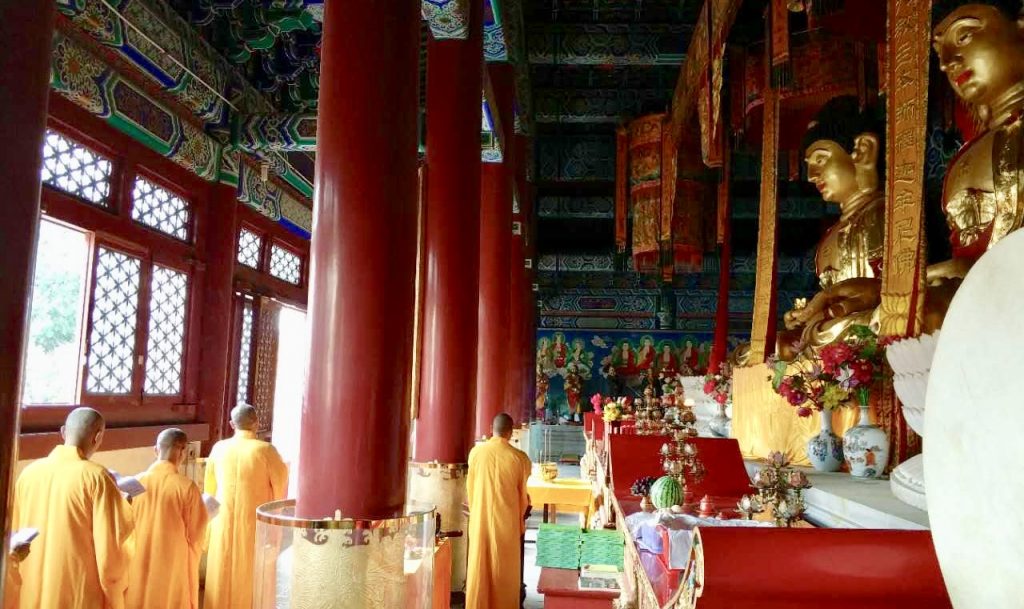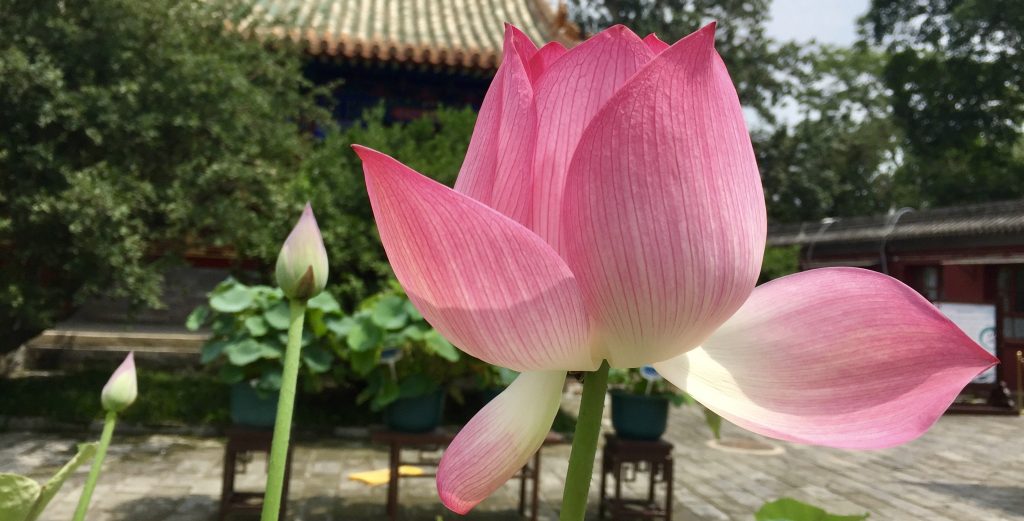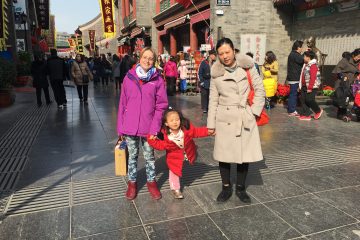Introduction
Located in beautiful countryside within reach of Beijing’s public transport network, the Pool and Mulberry Tree Temple makes a lovely escape from downtown Beijing. It sits on the famous Western Hills, but away from the main tourist hubs – the perfect peaceful day trip.
It is also one of the most historically important temples in the area, built in the Jin dynasty over 1700 years ago – although some buildings are much newer, from the Ming and Qing dynasties.
The Dragon Pool behind the temple and mulberry tree covered hillside gave this temple its name. Once you’ve finished exploring the temple buildings, give yourself time to explore the wider surroundings and countryside.
Don’t miss
Mahavira Hall
The main hall of the temple, the Mahavira Hall contains a statue of Mahavira surrounded by his students. The roof is decorated with intricate dragon and cloud designs. In front of the hall you will find a huge bronze pot in which monks used to cook their meals. Despite its large size, it was actually the smallest of three pots at the time – demonstrating the vast number of monks who used to live at the temple.
Guanyin Pavilion
The highest building in the temple, the Guanyin Pavilion provides fantastic views over the surrounding countryside.
Vairochana Pavilion
The tallest pavilion in the temple, the Vairochana Pavilion is covered in intricate paintings of dragons, phoenixes and clouds. Of particular interest is the dragon and phoenix couple, unusually painted with the female phoenix above the male dragon – this is thought to be because the Emperess Cixi was in power at the time, one of the earliest feminist statements!
Emperor Tree
This 1000 year old gingko tree stands in the main courtyard, supported by many wooden props. It was said during the Qing dynasty that with each new emperor a new branch would grow, resulting in the tree’s unusual shape.
Stone Fish
Hidden away in the western part of the temple, this huge stone fish (almost 1.5m long) shimmers an unusual deep green colour. It was carved from a meteorite containing traces of bronze, explaining its curious colour and the metallic sound it makes upon being hit.
Tomb Pagodas
These mini pagodas, of which there are almost 70 in number, show a huge variety in style – being built in different ages and styles.
Dragon Pool
Located just round the back of the main buildings, the Dragon Pool gave the temple its name. It is sadly now dried up and quite unimpressive at first sight, but the peaceful surroundings are worth the hike.
Practical info
Tickets: 55 RMB
Opening hours: 8:00 – 16:30 (winter), 8:00 – 17:00 (summer).
Recommended visit: 2 hours.
Tranport: take line 1 to Pingguomen (苹果园), leave via exit A or D, then take bus 931 for around an hour to the last stop – Tanzhesi (潭柘寺).
Top tip: combine with a visit to the Jietai Temple by taking bus 931 back to Mentougounan Village (门头沟南村), changing onto bus 948 to the Jietai Temple (戒台寺), then taking bus 948 back to the metro at the end of the day. A two-temple combo ticket is available for 80 RMB.
Nearby
Pool and Mulberry Tree Temple

Sheng’en Temple 圣恩寺
Sheng’en Temple 圣恩寺
White Cloud Temple 白云观
Dongyue Temple 东嶽庙
Niujie Mosque 牛街礼拜寺

Beihai Park 北海公园
Beihai Park 北海公园



0 Comments